Our next post is by Kai Victor, a sophomore at Cornell University:
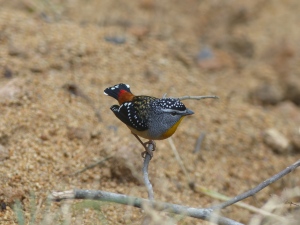
It’s 5am when my alarm goes off. Even though I’ve been somehow awake since 1am, my body shrinks at the thought of crawling out of my warm sleeping bag and into the frigid, dark, moist Australian winter air. When I finally achieve the semi-impossible and manage to worm myself down my bunk bed ladder in the dark, it takes all my remaining energy to go through the motions of brushing my teeth and collapse at the table for breakfast. My stomach still hasn’t woken up after dinner last night, so eating a big meal is out of the question. I force a banana down, hoping I won’t be starving to death in an hour or so.
The car ride to the field site takes about 30 minutes, but we’re delayed by first a Red-necked and than a Swamp wallaby bouncing along the road. They’re like the deer back home, except way cooler and more Australia-y. When we eventually pull into the parking lot, an avalanche of guinea fowl, roosters, and brush turkeys mob us. Two of the roosters have gotten tame enough to eat out of our hands, and they scramble to be the first one in line for breakfast. It’s nice to have such a reliable fan base.
My targets today are a group of fairywrens living near the edge of the lake, so I take the freezing plunge, stepping off the nicely mown cemetery path and into the wet grass.
Now, before we get further, let me go into a brief tangent on wet grass. First of all, there is good grass. This is short, anything from golf-course short to knee high. In tame terrain like this, your waterproof (I mean…it did say waterproof on the shoebox right?…or was it water-resistant?) hiking boots and snake gaiters will keep your toes semi-warm and dry. Usually, good grass at the field site is in short supply. Enough to make you think you’ll be fine taking off your rain pants when they get really hot around 10am, but little enough so that you immediately regret the loss of said pants when you feel very wet water dripping down grass stems into your boots. The other type of grass is bad grass. There are two types: first, we have wet furry grass. These have cattail-like heads of seed, each tipped with fine hairs. Beautiful, huh? Now imagine endless fields of this grass, each stem about six feet high, and each containing what seems like a gallon of water in each seed head. No matter how carefully you push the stems back as you pass through them, they somehow manage to sneak under your arms, lovingly daubing your face with the contents of a small reservoir. Drenched in water, tripping over the vines that happily try and snag you with every step, you stumble into the second kind of bad grass. This is the velvet grass. Sure, they look soft, but their stems are super sticky, their heads covered in dust-like seeds that come off at the slightest touch. A brush against one of these stems leaves you coated in seeds that adhere amazingly well to the rain-gear that the furry grass has pre-moistened.
As the sun rises above the lake, however, the coldness and wetness all become worth it. You forget all the seeds and burrs stuck to your clothing. Each head of seed turns into a torch of fire, each drop of water into a shining pearl. The early morning heat makes waves of fog rise off the water and grass. The horizon disappears, and sound becomes lost. The birds have trouble navigating in the fog, too, and often water birds suddenly appear feet away in the mist to your mutual surprise. This early in the morning, the birds are still active, and every step you take is a chance to flush a covey of Brown quail, or a single King quail (if you’re lucky), or a button quail (if you’re really really lucky). Today I get no quail, but instead, see an enormous White-bellied sea-eagle soar overhead. Next to me in the water swims an Australian pelican with a posse of three Little black cormorants. They seem to be hunting together, the cormorants driving the fish to the pelican and the pelican confusing the school with wild stabs of its bill. Another thing someone should study. As I walk by a little dirt hummock, I pause to say hello to Spotty and Dotty, a breeding pair of Spotted Pardalotes. They’re one of the friendliest wild birds on our field site, always willing to pose for a nice photo or twenty.
Aside from us field researchers, there are almost never any other visitors to this area. I feel like I’ve traveled back in time when I wake up this early. The eucalyptus trees and tall grass make me feel like I’m in my own little Jurassic Park. And in a way, I am. What are birds but living dinosaurs? Each Red-backed Fairywren a living remnant of a long-ago world.
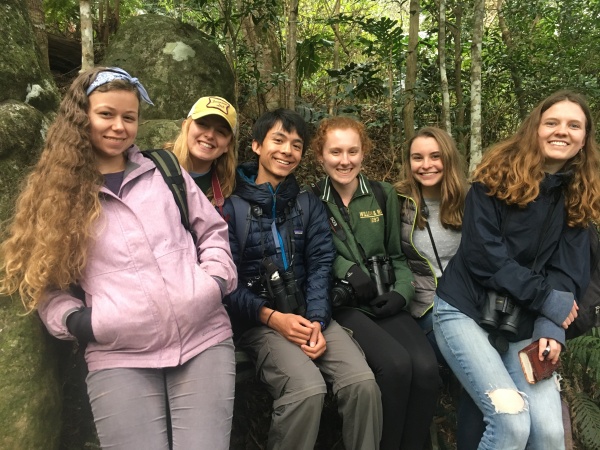











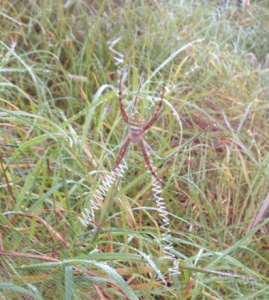
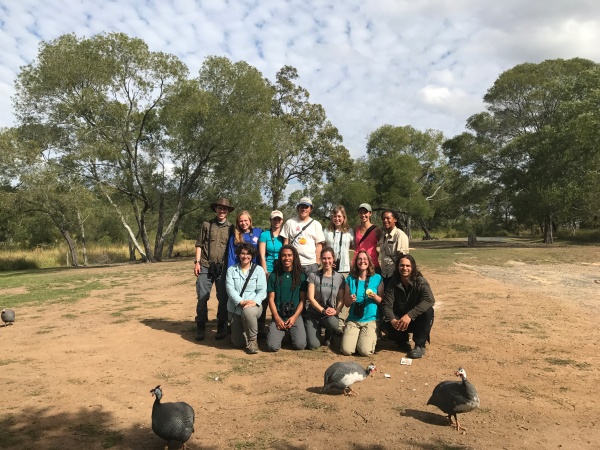
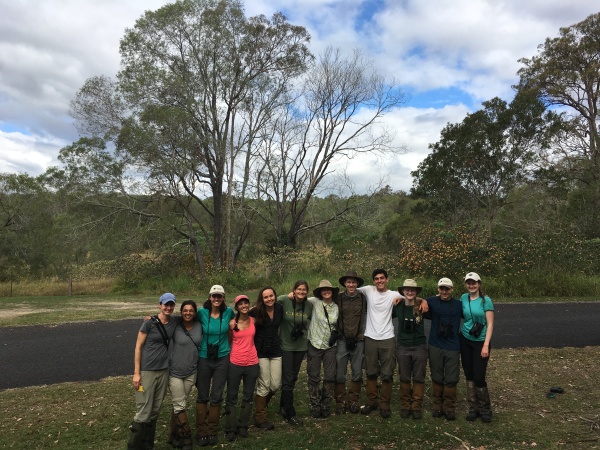

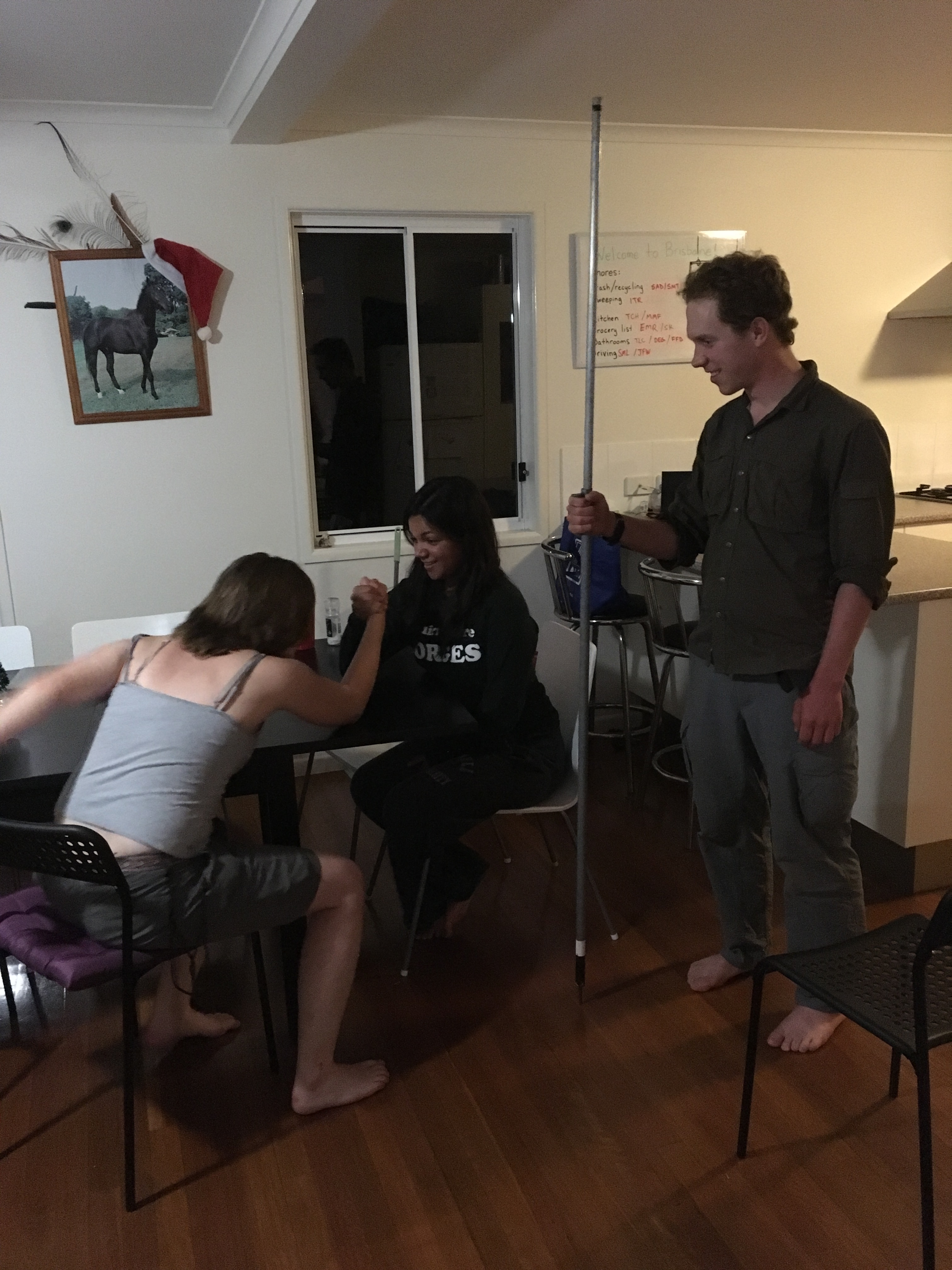
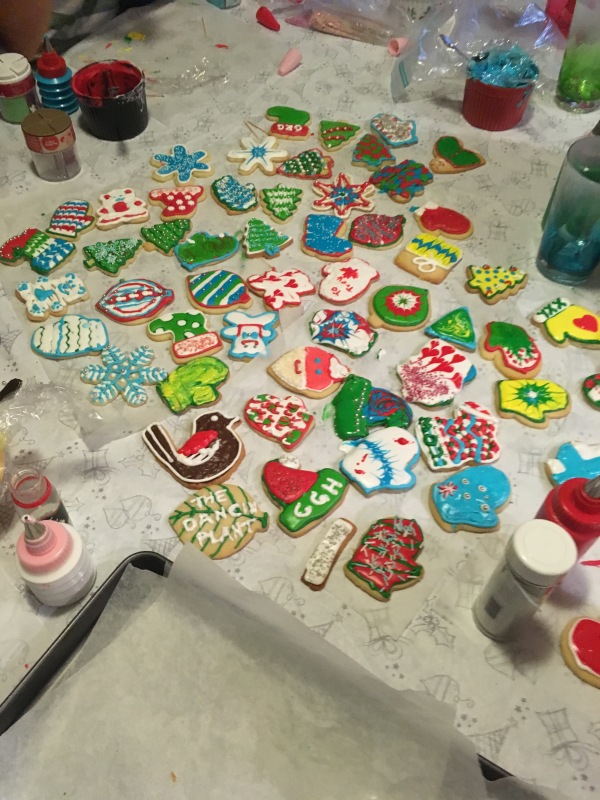
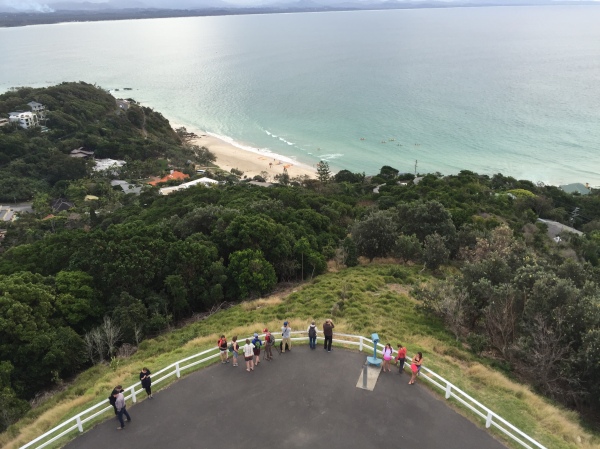 For our last day(s) off we took an overnight trip to Byron Bay, known for it’s lazy surf vibe and humpback whale migration! It was a great break before our last two weeks of non-stop data collection! Here are some of the students from the lighthouse watching for whales and dolphins.
For our last day(s) off we took an overnight trip to Byron Bay, known for it’s lazy surf vibe and humpback whale migration! It was a great break before our last two weeks of non-stop data collection! Here are some of the students from the lighthouse watching for whales and dolphins.